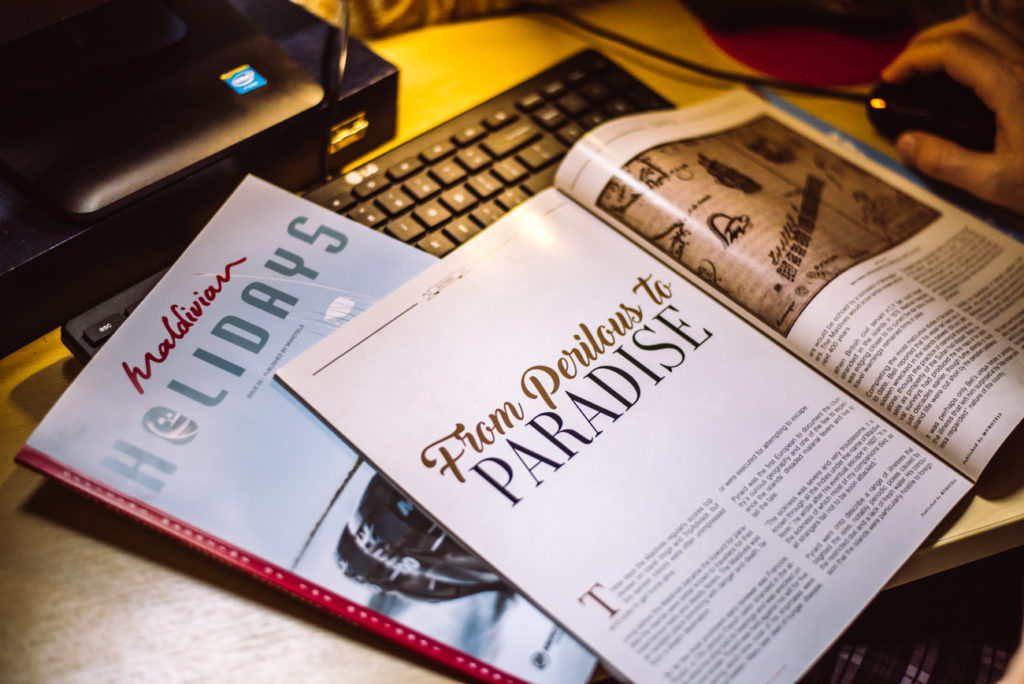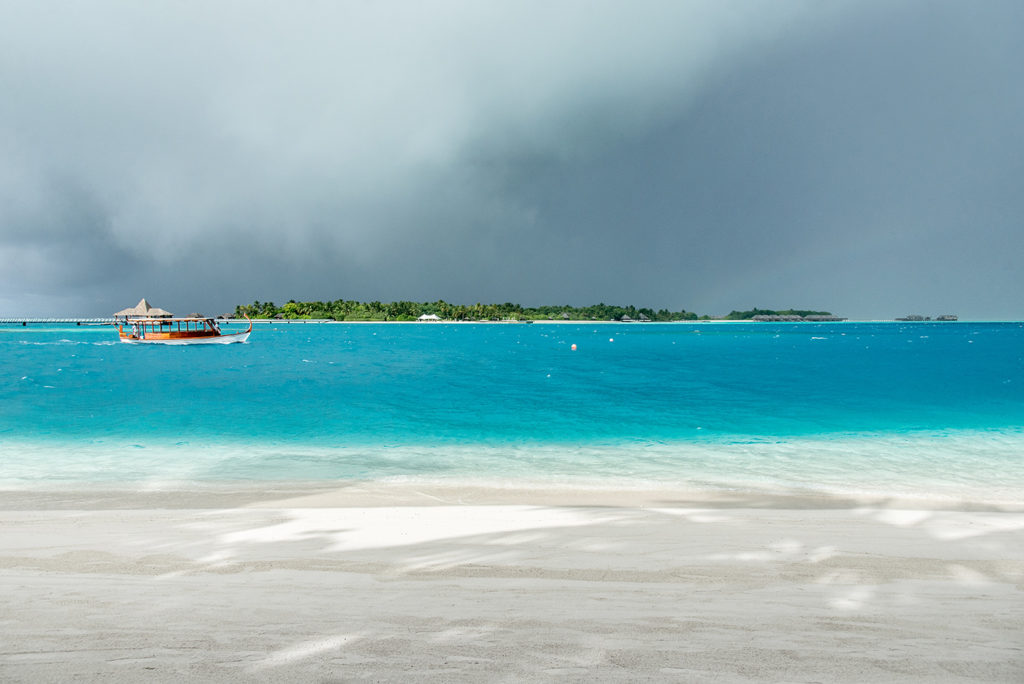From Perilous to Paradise

Words by Daniel Bosley; Pictures by Aishath Naj
This article features in this quarter’s issue of Maldivian Holidays magazine, the official magazine of Maldivian Airlines.
These days the Maldives regularly scores top reviews on travel blogs and TripAdvisor, but the earliest visitors were often unimpressed, and lucky to get home alive.
Long before the Maldives became the byword for paradise, the islands were better known to travellers for their treacherous reefs and deadly fevers. The Maldives was an isolated place brimming with danger and death, far from a dream destination.
By far the most prominent early reviewer was Francois Pyrard, a 17th century French sailor stranded in the atolls after his ship lost its bearings and became wrecked on the coral shoals. Pyrard was held against his will for five years, during which time most of his shipmates were robbed and beaten. Many died later of hunger, disease or were executed for attempting to escape.
Pyrard was the first European to document the country’s curious geography and one of the few to experience the islands’ dreaded malarial fevers and live to tell the tale.
“The sickness was severe and very troublesome; it is known through all the Indies under the name of Maldive fever,” he wrote after his eventual escape in 1607. “It is the sickness of which most of my companions died, as all strangers fail not to be soon attacked.”
Pyrard went onto describe a range of illnesses that blighted the isles, notably periodic poxes caused by the restricted diet and a lack of fresh water. His conclusion that the islands were particularly hostile to foreigners would be echoed by a succession of fellow explorers, providing less than glowing feedback over the following 400 years.
When British civil servant H.C.P. Bell found himself stranded in the islands in 1879, Maldivian hospitality was edging closer to its current five-star status, though travel warnings remained firmly in place.
Completing the most meticulous studies of the islands to date, Bell reported that his vessel had been one of sixteen wrecked in the islands between 1850 and 1880 alone, though the practice of claiming all stranded vessels as property of the Sultan had stopped. British naval surveys had produced the first maps of the atolls just decades earlier, though further attempts to study island life were cut short by the persistent pestilence.
It was perhaps only Bell’s unique fortune in avoiding the illness that left him surprised at the “little known and less regarded” nature of the country.
“Europeans seem especially liable to this fatal scourge of the islands,” wrote Bell in his report. “Many have been the ill-fated survivors of wrecks on the Atolls who have but exchanged a watery grave for a slower death from this insidious pest…Its unhealthiness for Europeans has become notorious, and has undoubtedly been a great obstacle to foreign intercourse and internal improvements.”

Similarly, the initial observations of German explorer C.W. Rosset – who would take the very first photographs of Maldivians in 1885 – were quickly sobered by the reality of the environment, largely untouched by foreigners since the brief 16th century Portuguese occupation.
“As I leant over the bulwarks, admiring the scene, I suddenly became aware of a painfully pestilential odour, which at once dissipated the romantic thoughts which the beauty of the scene had conjured up,” wrote Rosset. “This was the much dreaded fever-laden breath of the lagoons, the cause of the deadly Maldive fever.”
A short time later, Maldivian Prime Minister Amin Didi would pen what might be regarded as the country’s first travel brochure. Amin’s booklet hoped only that the “expansive horizons” and “azure haziness” would lure people as near as the government showroom in Colombo. Here, they could purchase little piece of paradise – lacquer work, sea shells, coir rope and the famous Maldive fish – without the health risks.
Yet, even in 1948, the idea that foreign tourists might actually pay to visit must have seemed absurd to a nation described as reclusive and wary of the outside world by its own president.
Soon afterwards, colonialism entered its final throes and the tiny island nation stepped onto the world stage, gaining independence and UN membership in 1965, and beginning a period of unprecedented development.
Though the new international partners advised against diversifying from fishing and boatbuilding into tourism, the paradise trade has drawn innovation from isolation, propelling the country from one of the poorest in the world to the richest per capita in South Asia. The population has quadrupled and the image of mystery has been firmly replaced with one of wondrous luxury.
Thankfully for today’s guests, the country became the first in the region to be declared officially malaria-free in 2015, with more than thirty years having passed since the last documented case. Additionally, a fleet of seaplanes and nine airports now give foreign travellers a bird’s eye view of the atolls of which marooned mariners could only have dreamed.
Well over one million tourists now visit the Maldives to live out the castaway experience. To many, being stranded on a white sanded island would seem like a dream come true.
After millennia of bad reviews, shipwrecked sailors and ailing explorers, the transformation from perilous to paradise has been completed in just two generations.

Leave a comment